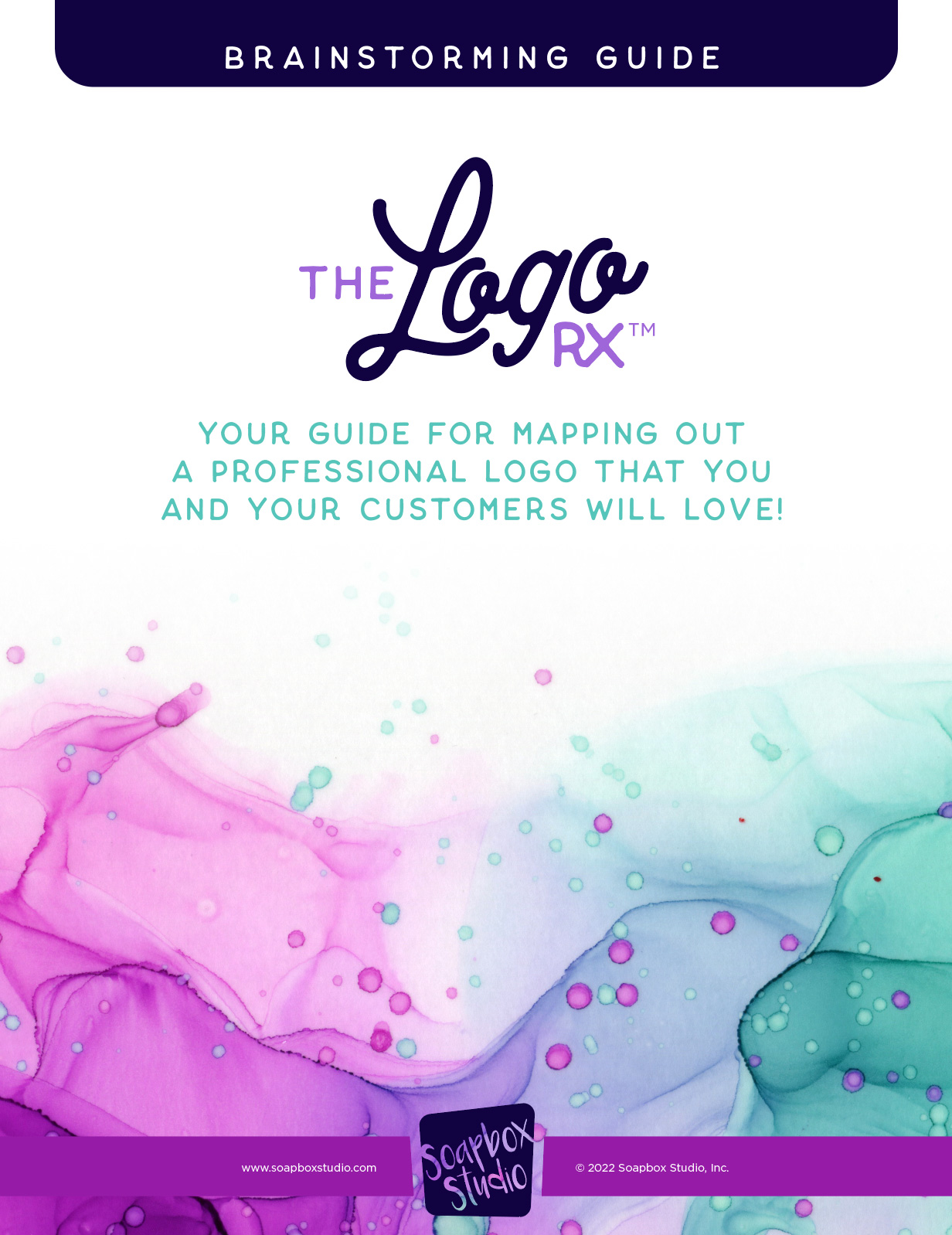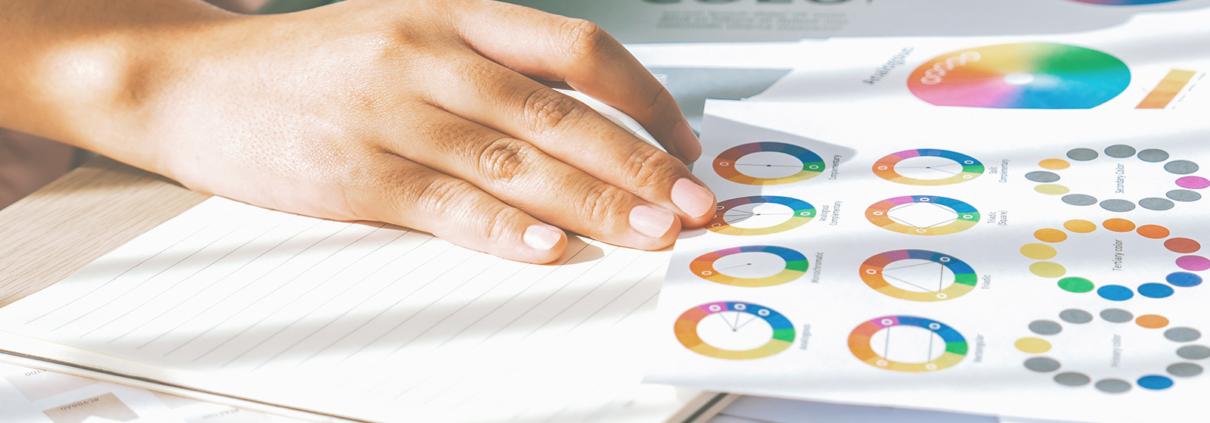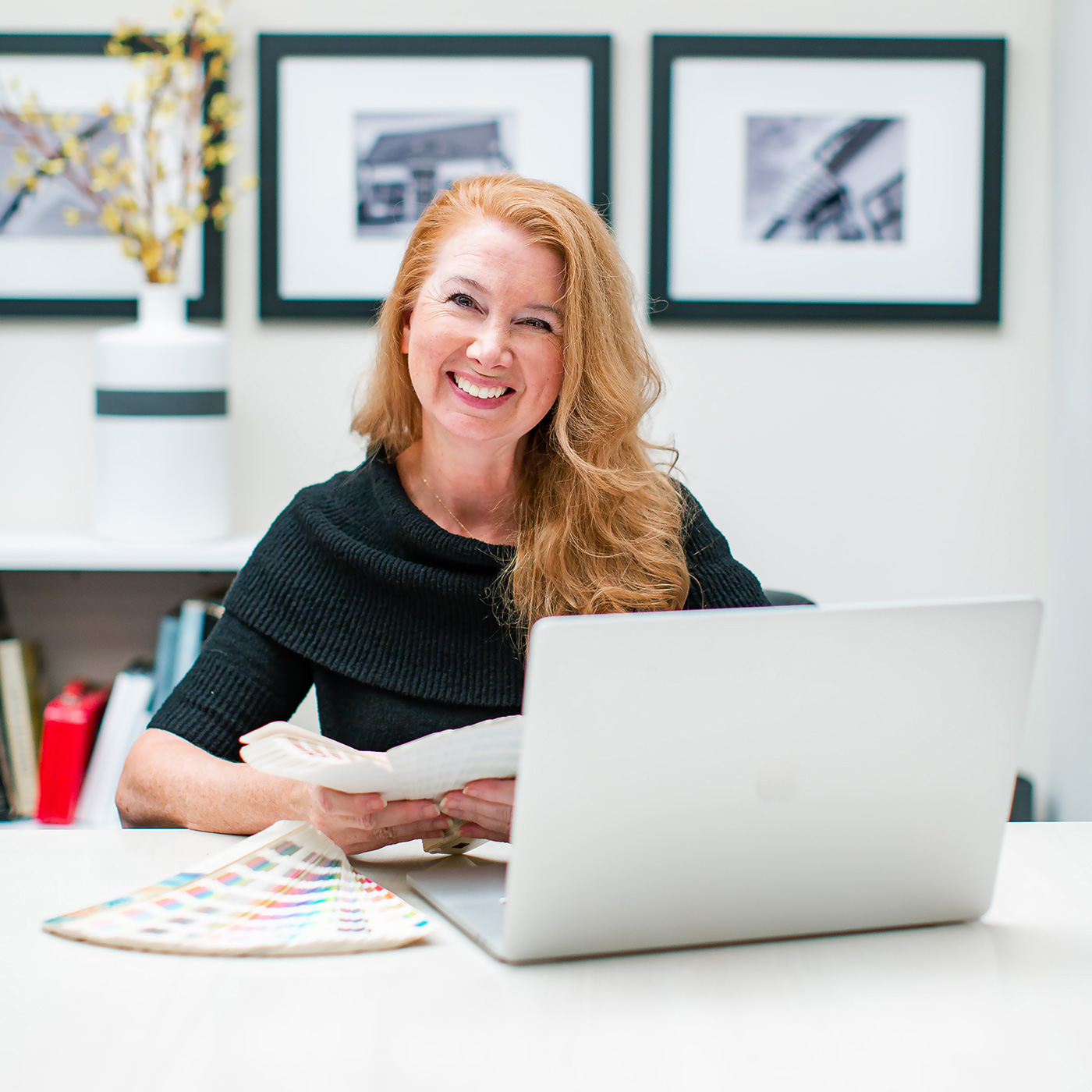Drawing in Clients: A Guide to Creating an Irresistible Brand Color Palette
When considering your branding color palette, have you ever wondered why colors matter? Does your audience care if your logo is yellow or pink? Choosing your branding color palette is a very important decision that all business owners will need to make, especially if you want to ensure your brand conveys the right message to your audience instead of repelling them.
In order to draw your clients in and create an irresistible brand color palette, you’ll first need to learn why color matters so much, the psychology of color and what colors actually mean, what a color scheme is, what you should include in your color palette, and how to choose the best color palette for your brand.
Brainstorm Your Logo Creation Today!

This guide will walk you through the steps I use as a professional designer, to create beautiful logos for all my clients. I am sharing my steps for FREE, so you can use this secret sauce on your own logos.
Before we begin, if you’d like to watch a YouTube video instead about brand color palettes:
Creating an Irresistible Brand Color Palette
Let’s go over these topics as we learn more about how to create an irresistible brand color palette that will have your audience begging for even more from your brand:
- Why Color Matters For Your Brand
- What to Consider When Choosing Colors For Your Brand
- Psychology of Color
- How To Choose A Color Palette For Your Brand
- How to Expand Your Current Brand Color Palette
- Color Variations
- Tools You Can Use To Experiment With Your Color Palette
- What Does a Brand Color Palette Include
- Crafting an Irresistible Brand
Why Color Matters For Your Brand
I know it can seem silly to place so much importance on color, but in reality, color plays a vital role in establishing your brand identity. Colors are valuable to your brand, and thinking strategically about your brand color palette is important.
Colors possess the power to influence prospective customers, either positively, prompting them to make a purchase, or negatively, leading them to exit instead.
Your branding color palette has the ability to establish brand loyalty, making your audience feel compelled to stick with you. Choosing the wrong color can cause your customers to overlook you and your brand.
What to Consider When Choosing Your Brand Colors
When you are choosing your brand color palette, you’ll want to consider these things:
- What colors align with your brand values?
- What colors convey the essence of your company?
- What do you want your potential customers to think when they see your branding?
These are all good things to take into consideration when you are trying to decide what colors should represent your brand identity. But before you can choose colors, it’s best to know what each color actually means by learning the psychology of color.
Psychology of Color
The emotional impact of colors is significant. Specific colors can evoke trust, reliability, affection, or happiness. While others may be linked to boredom, anger, sadness, greed, or panic. Recognizing this psychological aspect can help you build credibility with your intended audience.
Let’s briefly discuss some of the main colors and go over the positive and negative feelings associated with each color.
Red
The color red evokes positive feelings of power, confidence, ambition, passion, and strength. Some of the negative feelings associated with the color red are danger, anger, and aggression. Red brings out the strongest emotions of all the colors.
Orange
Orange is a color that portrays positive feelings of attention, happiness, adventure, sporty, playfulness, and spirituality. Some negative feelings that the color orange can bring out are crassness, pessimism, and being cheap. Orange is one of those colors that a lot of sports teams love to use.
Yellow
Yellow is one of those colors you either love or hate and often promotes positive feelings of warmth, the sun, energy, cheerfulness, positivity, and being alert. On the negative side, yellow tends to be abrasive, frustrating, and cause visual fatigue.
Green
Green is the color that represents wellness, and interestingly, consumers will buy more products with green packaging because it feels healthier. The color green promotes health, balance, growth, and money. On the flip side, its negatives are envy and illness.
Blue
Blue is one of the most popular colors, which is why it’s no surprise that you’ll find a lot of logos that have blue in them. The color blue represents calmness, productivity, stability, and sincerity. Some of the negative feelings associated with the color blue are feelings of sadness and loneliness, and is also one of the least appetizing colors out there.
Purple
Purple is a very polarizing color and tends to lean more toward femininity. The color purple often makes us feel creative, regal, imaginative, and brave. On the negative side, purple can evoke feelings of sadness and frustration.
Pink
Pink is a great color when targeting a female audience and often promotes feelings of romance, joy, vibrance, and freshness. Negatively, pink can make you feel girly, childlike, or vulnerable.
Brown
The color brown is the least favorite color for both men and women but is a very popular color for clothing. Brown can positively encourage feelings of security, reliability, and nature. On the negative side, brown can feel dull and lonely.
While all colors have different characteristics, it’s important to note what your target audience might be drawn to. It’s also just as important to be aware of what might turn them off when thinking and planning your branding color palette.
How to Choose A Color Palette For Your Brand
As you are trying to decide on a branding color palette, it’s important to understand color schemes. A color scheme is a thoughtfully chosen and organized set of colors you can use in your branding.
Professional designers leverage color schemes based on principles of color theory to ensure a harmonious and visually appealing outcome. It’s all about picking the right colors that play well together and give off the right feel.
Let’s go over the different color schemes and how they work so you can ensure you are choosing colors that complement each other.
There are 6 different color schemes that you can work with when you are choosing a brand color palette:
Monochromatic
Monochromatic (or mono) is a color scheme based on only one single color tint. It uses only variations (shades) of a single hue. When you choose a Monochromatic color scheme, it’s like sticking to one color and playing with different shades of it. It’s all about nailing variations of a single color.
Analogous
Analogous colors mean the color grouping has similarities and is next to each other on the color wheel. These color scheme types have close relationships with one another. Analogous colors are like BFFs on the color wheel. They’re the shades that just click and have a solid connection like they’re in the same color crew.
Triadic
A triadic color scheme consists of three colors. Unlike colors that sit next to or directly across each other, triadic colors are equidistant on the color wheel. When you join these colors, they form a triangle.
Triadic is all about the power of three! Pick three colors that are equally spaced on the color wheel, forming a triangle. They’re like the trio that brings that perfect balance.
Complementary
Complementary is a color scheme using one base color and its complement, the color on the opposite side of the color wheel. The base color is main and dominant, while the complementary color is used only as an accent.
Complementary is when you team up a main color with its partner in crime, the one on the opposite side of the color wheel. It’s like the dynamic duo, with the main color taking the spotlight and the complement adding that extra pop.
Split Complementary
A split Complementary color scheme uses two colors across the color wheel, with those two colors lying on either side of the complementary color. Split-complementary is like choosing a base color and grabbing its two sidekicks from across the color wheel. They create a team with a bit of contrast that keeps things interesting.
Square
The square color scheme is a four-color combination. The square color scheme is like a fab four! Start with a base color, and then add three more that are spaced 90 degrees apart on the color wheel. It’s like building a colorful square squad.
If you are unsure where to start when picking a brand color palette, choosing a color scheme is a great place to begin because you can be sure the colors in these groupings will look good together.
How To Expand Your Current Brand Color Palette
If you already have a brand color palette and you want to expand your color palette for new products or services you offer, a really easy way to do this is to look at the color wheel and create variations from your existing palette.
In order to create color variations, let’s first look at the different types of variants and how you would go about making them.
Color Variations
Hue: Pure Color
The hue is the pure, unaltered color itself. It represents the distinct quality of a color without any additions or modifications. For example, red, blue, and green are different hues.
Tint: Pure Color + White
Tint is created by adding white to the original hue. This lightens the color, resulting in a softer and pastel-like version. For instance, if you add white to red, you get various shades of pink.
Tone: Pure Color + Black & White
A tone is achieved by adding both black and white to the original hue. This process desaturates the color, creating a more muted and subdued version. It falls between the intensity of the pure hue and the lightness of the tint.
Shade: Pure Color + Black
A shade is produced by adding black to the original hue. This darkens the color, creating a deeper and richer version. For example, if you add black to blue, you obtain various shades of navy or indigo.
Tools You Can Use To Experiment With Your Color Palette
Try out this tool, mdigi.tools, to play with shades and tints. All you have to do is type in the HEX color code of any one of your brand colors and it will give you the shades and tints of that hue. This is an easy and fun way to expand your color palette.
Another fun tool to use when you want to play with different color variants is coolors.co. It’s a great way to look at different colors you might not have considered. You can also check out Pinterest for color ideas too.
What Does A Brand Color Palette Include?
After you have made some decisions on which colors your potential audience will be drawn to and what colors best represent your brand, you’ll want to create a color palette, and the best place to represent your palette is inside a brand guide.
Your brand guide should include your primary colors, secondary colors and accent colors, as well as your fonts and your logo.
With The LOGO RX, we can help with all aspects of your branding, from the logo to the brand guide. If you don’t have the time to do it yourself or you simply want someone to help you come up with the best color combinations for your brand color palette, then the LOGO RX is just what you need.
Crafting An Irresistible Brand
Creating an irresistible brand color palette is not just about picking pretty colors; it’s about strategically crafting a visual identity that resonates with your audience.
The significance of color in brand identity cannot be overstated, as it influences how potential customers perceive and connect with your brand.
By delving into the psychology of color, understanding different color schemes, and mastering the art of expanding your brand color palette, you can confidently choose colors that not only draw in clients but also establish a lasting and positive brand image.
A positive brand image is created when your brand colors emulate credibility, stability, and confidence. So, whether you’re starting from scratch or looking to revamp your existing palette, take the time to explore the world of colors and let your brand shine.
If you know your branding needs an overhaul and the whole process of choosing the best colors for your brand seems overwhelming – we can help.
If you are ready to hand over your branding to us, we will give you the logo of your dreams! When you purchase THE LOGO RX, you are one step closer to the logo of your dreams.
Our proven design process will guide you through answering questions about your business that will give us the information we need to create a fantastic logo just for you. So you can put your energy into making money. Check out our design packages here!





